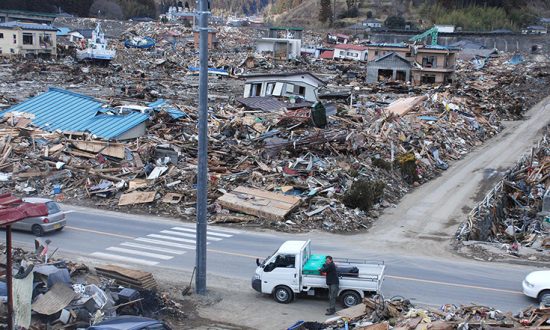
Disasters explained
Everything you need to know about disasters – from extreme weather events to complex conflicts.
At the end of 2024, more than 123 million people worldwide were forcibly displaced by conflict, disasters, and climate crises. 83 million people are displaced within their own countries.
Displacement refers to the forced movement of people from their homes due to conflict, environmental disasters, or other crises.
These are not just numbers – they represent families, communities, and entire lives uprooted by circumstances beyond their control. The below demonstrates the number of people globally displaced by climate and conflict.



People who are forced to leave their homes is driven by a complex web of causes:
The number of people forced to flee their homes is accelerating, fuelled by overlapping and recurring crises. The world is witnessing more interconnected emergencies than ever before.


Displacement occurs when people are forced to leave their homes, often with little or no warning. It includes:
Key takeaways:
The scale of global displacement demands urgent, coordinated action:


The conflict in Sudan has caused a humanitarian catastrophe, causing millions of people to leave their homes, and seek safety both in other areas of the country and outside it’s borders.
One in every five people in the country have been displaced because of the war and previous conflicts in parts of Sudan since 2003. This humanitarian crisis is extreme.
Find out what is happening in Sudan, who is affected and what you can do to help.
What's happening in Sudan?

Years of civil war continue to leave millions displaced and reliant on humanitarian assistance.
Right now, over 12 million people have fled their homes. There is significant human suffering, with more than 16 million people needing humanitarian assistance.
Where have people gone, what caused the crisis in Syria and how is it affected by climate change?
What's happening in Syria?

Displacement is a global crisis, but its impact is not evenly felt. Some regions bear a disproportionate burden, facing repeated and overlapping emergencies that uproot millions.
These countries are not only grappling with conflict and persecution, they are also on the frontlines of climate change, facing extreme weather, droughts, and floods that destroy homes and livelihoods.
Where are people most affected by climate change and conflict?
who is affected by this?

Our vision is for a future where no one is without shelter after disaster or conflict.
Donate – Your contribution helps us deliver emergency shelter and essential supplies to people who have lost their homes.
Stay informed – Sign up to our Newsletters to receive updates on our work, the people we support and ways you can get involved.
Fundraise – Organise a fundraising event, take on a challenge or join a fundraiser, to help bring shelter to those in crisis.
Volunteer – Get involved by offering your time and skills to support our work and make a difference with us.
Join our Book Club – Join a unique community of over 2,500 book lovers today, and help disaster-hit families with every book you read.
Donate today
Being forcibly displaced refers to being driven from one’s home or place of usual residence because of threats such as war, persecution, violence, or environmental disasters.
This can result in seeking safety across national borders – as a refugee – or staying within one’s own country, becoming what’s known as an internally displaced person.
Climate change is a significant driver of human displacement. Its effects, like rising sea levels, intensified environmental disasters, and desertification, can make regions uninhabitable and destroy livelihoods.
As a result, communities are often forced to move, either within their own countries (internal displacement) or across borders (international displacement). Read about climate change and it’s connection to conflict affected areas.
A stateless person is an individual who is not considered a citizen by any country, according to its legal framework.
Without official nationality, they are often denied essential rights and protections – including access to education, employment, healthcare, and the ability to travel or participate fully in society.
Under the United Nations Refugee Convention, a refugee is someone who has fled their home country due to a well-founded fear of persecution and is unable or unwilling to return for protection.
To qualify as a refugee, individuals must demonstrate that their fear of persecution is based on specific factors such as race, religion, nationality, political opinion, or membership in a particular social group.
An asylum seeker is someone who has arrived in a country and formally requested asylum.
Until a decision is made on their refugee status, they remain an asylum seeker. In the UK, asylum seekers do not have the same rights as refugees or British citizens, meaning, for example, that they are not permitted to work.
Seeking asylum is a legal right available to everyone. It is not illegal to seek asylum, as it is a recognised legal process. Likewise, being refused asylum is not a criminal act – it simply means that the strict criteria required to qualify as a refugee have not been met.
The key distinction between refugees and internally displaced persons (IDPs) is whether they cross an international border in search of safety.
Refugees leave their home country to escape persecution, war, or violence, seeking refuge beyond national boundaries. In contrast, IDPs are forced to flee their homes due to similar threats but remain within their own country’s borders.
In the UK, people seeking asylum are not allowed to work– families struggle to survive on just £5.84 a day.
Refugees endure numerous hardships, from the trauma of displacement to difficulties accessing vital resources and adjusting to new communities.
These challenges span immediate concerns, such as securing shelter and food, to long-term struggles like language barriers, unemployment, and mental health issues. Additionally, many refugees face the emotional burden of leaving their homes, often due to war, crises, or environmental disasters.
Find out how conflict and climate is causing a double crisis, who is affected and what you can do to help.